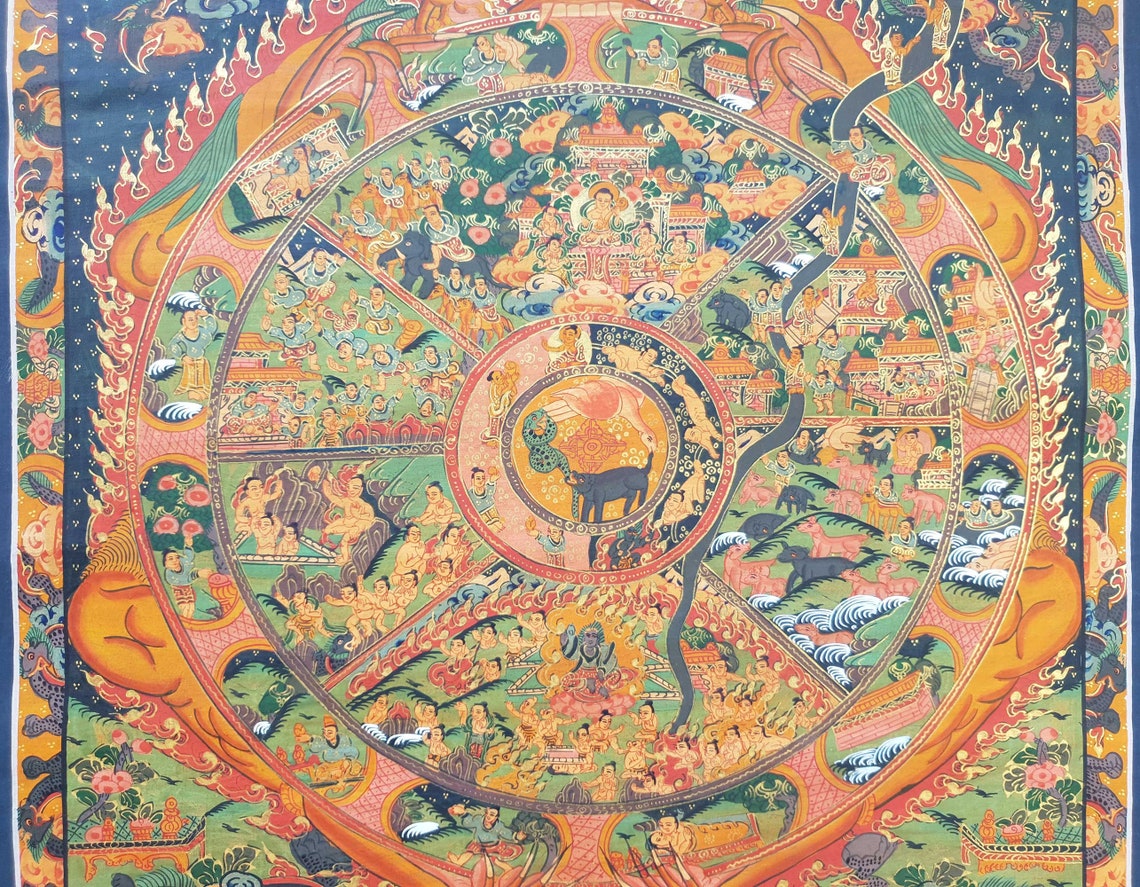
The gods enjoy bliss for almost incalculable time, but their long life is the source of their sufferings. Sweet stains of music are to be heard everywhere, and whenever they wish, they may eat of the tree of life, whose branches instantly yield any food wished for.

The realm of the gods: The gods dwell in heavenly bliss. This compassion: rising from every direction, helps all being towards the path to enlightenment and release from the suffering of the universe.ġ. Also, in each realm, the compassion of Lord Buddha is all pervading. Nevertheless, the beings of the six realms cannot escape the suffering to the universe: in each of the realms, suffering exists. Demeritorious Karma causes rebirth in the lower realms of animals, yidags, and hells. Meritorious karma causes beings to take birth in the realms of gods, demi-gods and human. The spoke: the spokes of the wheel divide our universe into six sensual realms: Gods, demigods or titans, human beings, animals yidags or ghosts and hells. The out axle shows the manifestations of a white bright heaven and a dark black hell.

By abstaining form these three vices, we may further our progress on the path to nirvana. These three great vices, which rule the universe and the keep it in continuous revolution, are symbolized by pig (ignorance), the cock (lust), and the snake (hatred). To achieve this end, we must be aware of the three evils which cause our sufferings, ie.e, ignorance, lust and hatred. The purpose of Mahayana Buddhist teachings is to relieve all living beings from suffering. The axle: the noble truth in Buddhist belief holds that “suffering exists”. The wheel of life is divided into three parts: axle, spokes, and rim. His presence outside the wheel implies his escape from the cycle of life.
Thangka wheel of life free#
Outside the wheel is a figure of the lord Buddha, who is free from the moral and mental obstructions which can prevent all living beings from achieving enlightenment. He is said to symbolize the fearfulness of death and the hideousness of clining to life. The wheel is held in the embrace of shenjhe, who is again represented in the sphere of hell, is a ferocious god with fangs. This suffering of rebirth affects the whole living universe. The form in which a being is reborn into the universe depends upon his yearnings, prayers, and the amount of merit and demerit (karma) he has stored up in his past life. It explains in a most lucid manner the theory of rebirth. Size: (artwork only) 27" height, 19.5" width (entire piece) 40.5" height, 30.The wheel of life is a detailed representation of a basic Tibetan belief, i.e., the transmitratory existence. The painting is done with mineral pigments onto a canvas and then bordered with black, yellow, and red silk. Typically a moon is shown above the wheel to represent liberation from cyclic existence, and the Buddha points to the moon to show that liberation is possible. The figure holding the wheel of life is a representation of impermanence and how cyclic existence is ever-changing. The fourth layer represents the twelve links of dependent origination, depicting how the sources of suffering produces lives within samsara.

The third layer represents the six realms of samsara and the suffering within it. The bhavacakra has different layers, each with a different meaning: The first and center layer represents the three poisons of ignorance, attachment, and aversion.

Thangkas are often found on the walls of Buddhist temples and are meditated upon in order for monks to reach enlightenment. Very interesting and unusual Tibetan Thangka (also known as a scroll painting) depicting the bhavacakra, or wheel of life, representing samsara (cyclic existence).


 0 kommentar(er)
0 kommentar(er)
